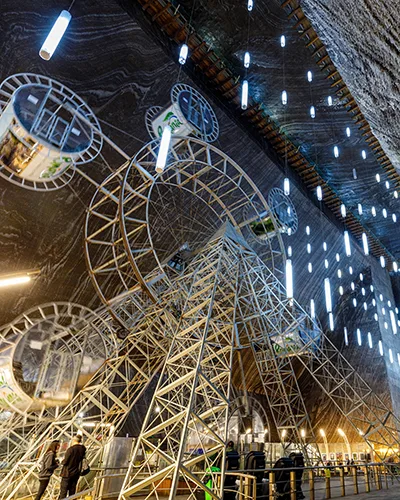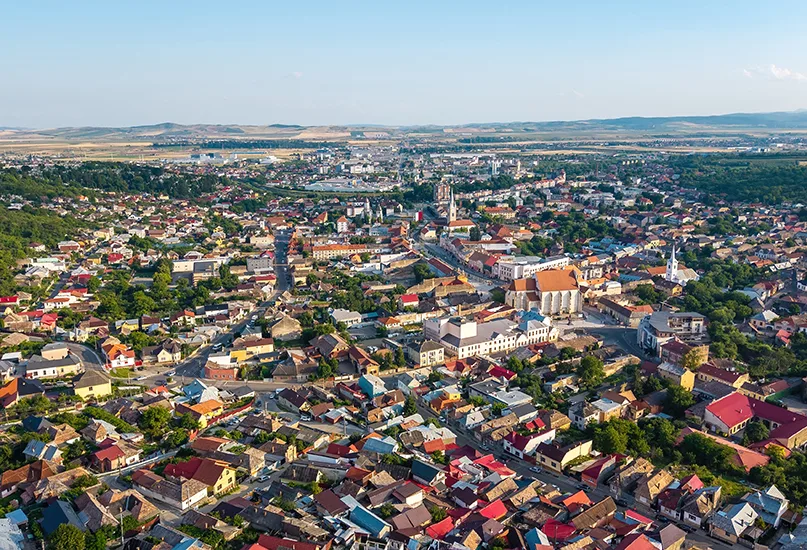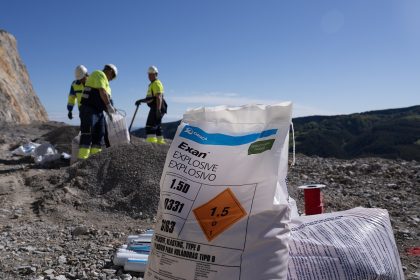The Turda Salt Mine is one of the world’s most spectacular tourist destinations, an underground formation created in a special natural environment.
MAGICAL LAND IN THE DEPTHS OF TRANSYLVANIA
Turda is one of the oldest and most important cities in Romania, full of history and legend.
Located in the heart of Transylvania, Turda began as a Dacian settlement before it was occupied by the Romans.
Salt, once a highly valuable commodity, was first extracted here during antiquity, with the Turda Salt Mine becoming the main source of supply in the region.
A treasure left behind by time, the mine dates back to prehistory when Transylvania was covered by an immense sea.
Millions of years later, the waters evaporated and left behind an impressive layer of salt that spreads across the entire subsoil of Transylvania, with an average thickness of about 400 metres (m).
After the closure of mining activities in 1932, the Turda Salt Mine entered a period of forgetfulness until it was used as an air raid shelter during World War II.
Today, the Turda Salt Mine has been restored and modernised into a modern and surprising international tourist destination.
Hundreds of thousands of tourists come every year to visit this underground salt labyrinth, taking them into the magical depths of Transylvania.


EXTRAORDINARY HEALTH BENEFITS
Salt is not only said to bring good luck, but also – first and foremost – health.
Indeed, salt therapy is recommended for effectively treating respiratory diseases, stimulating immunity, supporting the detoxification of the body, improving the functioning of the digestive tract, and helping to reduce the effects of fatigue and stress.
The Turda Salt Mine is known for its curative properties – a simple walk through can help visitors feel good.
Indeed, it has extraordinary health benefits thanks to the mine’s sterile environment and extremely low concentration of microorganisms.
It is therefore amongst the first salt mines in Romania and abroad to be used for speleotherapeutic purposes.
Its microclimate and sanogenic factors also offer optimal conditions for the recovery therapies of various internal conditions as well as prophylaxis and sanogenesis.
As a natural and inexhaustible source of health, the mine bestows a state of well-being thanks to its pure air and invites guests to relax and disconnect.
In this fresh and humid atmosphere, tourists can stroll through the impressively large space, enjoying a spa with a gym, jacuzzis, saunas, and swimming pool.
They can even sail aboard a boat in the Theresa Mine, the site’s oldest mining operation where salt was exploited between 1690 and 1880.
An underground lake majestically dominates the scene in the Theresa Mine, a unique splendour up to 6 m deep.
Over time, an island was formed in the centre of the lake from the residual salt deposited after 1880 when exploitation ceased.
As well as the underground lake, the Theresa Mine hosts a salty waterfall, stalactites, and salt efflorescence.

STAIRCASE OF THE RICH
The Staircase of the Rich reigns the Registry Chamber, so-called because it was ideal for keeping track of the people entering and leaving the Rudolf Mine.
Franz Joseph I, Emperor of Austria and King of Hungary from December 1848 until his death in November 1916, is said to have descended the staircase.
No miner was allowed to use the staircase following his descent, with its use intended only for nobles – hence its name, Staircase of the Rich.
It is the oldest wooden structure in the Turda Salt Mine and made of fir wood, offering several advantages in this saline environment.
For example, the staircase’s resin neutralises the salt and doesn’t allow it to crystallise. Fir wood also doesn’t break right away; it is made up of several layers and warns in advance if there are tensions that can cause cracks.
Elsewhere, in a niche dug in the eastern wall of the Registry Chamber, there is the altar, a place of prayer, faith, and hope.
Legend has it that one morning, an elderly worker responsible for lighting the torches in the mine every day suffered an accident and felt the presence of God.
On the wall, in the light of the torch, he saw the face of the Virgin Mary holding Jesus in her arms. Being very faithful, the people decided to dig the altar in its place and, every morning, the priest of the salt mine would hold a service in order for them all to be protected.

RUDOLF MINE
Descending from the Staircase of the Rich to the Rudolf Mine completes the experience at the Turda Salt Mine.
Named in honour of Rudolf, Crown Prince of Austria and the only son of Franz Joseph I, the Rudolf Mine is the last place where salt was exploited in the Turda Salt Mine.
172 steps lead visitors down 13 floors to the heart of the mine; at each resting bridge, the wall is marked with the year that the respective level was exploited.
A series of unique, fun activities await, including a multifunctional amphitheatre, sports fields, bowling, mini golf, billiards, table tennis, a playground for children with slides and mini basketball backboards, and more.
The underground panoramic wheel is also unique and likely one-of-a-kind, allowing visitors to admire stalactites as well as the skilfully showcased remains, whilst the panoramic elevator gives tourists an overview of the whole mine.
Thus, the Turda Salt Mine is one of the world’s most spectacular natural underground formations.



































